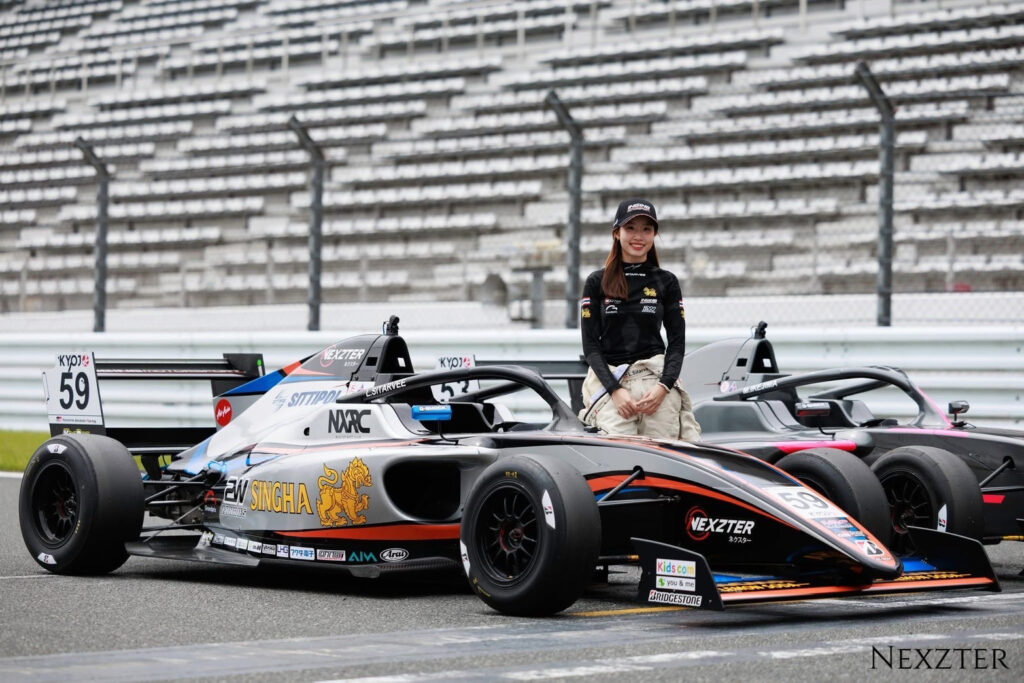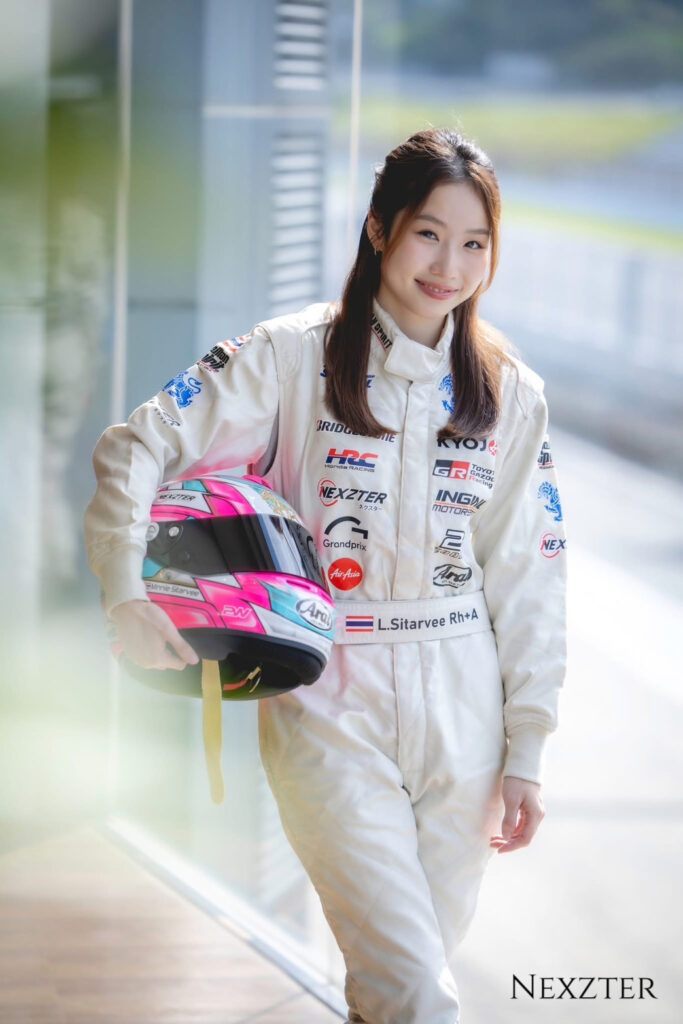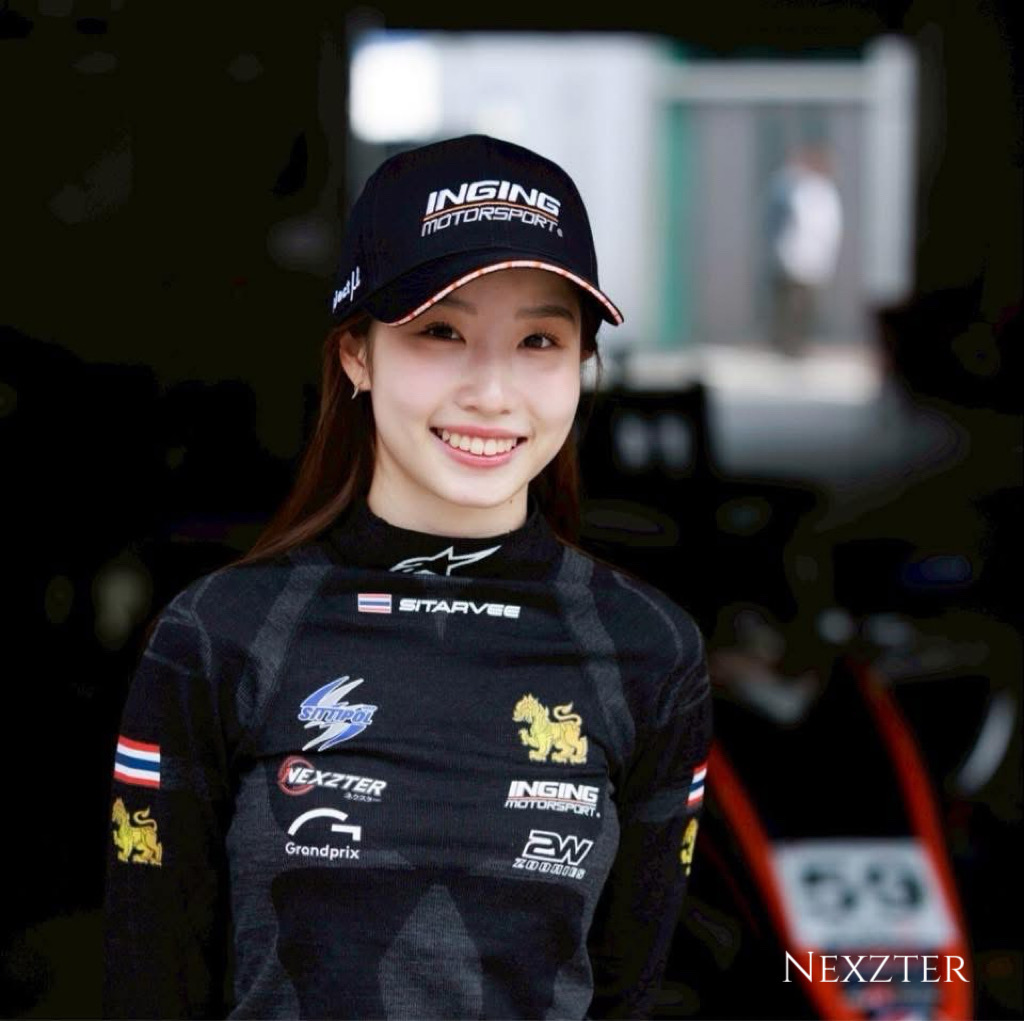On the Rise: Minnie Sitarvee’s Breakout Moment in the Kyojo Cup
In the high-stakes world of the Kyojo Cup, Minnie Sitarvee Limnantharak carries a unique distinction. She’s the only Thai driver in the championship. Representing her nation on a competitive stage, Minnie faces every race with determination, skill, and an unwavering focus on pushing her limits. Her journey is one of persistence, adaptability, and the drive to prove that talent knows no borders.

Q: For those who don’t know, what exactly is the Kyojo Cup?
A: It’s a racing series in Japan that’s exclusively for women. It used to run with VITA cars, which are open-wheel but not full formula cars. This year is actually the first year they’ve switched to real Formula 4 cars, which makes it a bigger challenge.
Q: How did your most recent race go?
A: Since I’m from Thailand, I can only practice when I’m in Japan for the races, so I don’t get as much seat time as the others. That means I’m at a bit of a disadvantage in terms of practice.
Q: If someone wanted to become a racing driver, where should they start?
A: If you start young, definitely begin with karting. Build as much experience as you can there, then move up to cars, and from there find a way to step into formula racing.
Q: So to get into Formula 4, do you need to race cars first?
A: Not really. Ideally, if you’re going for formula racing, you should start with karting because it’s open-wheel to open-wheel. But in Thailand, there’s no open-wheel racing to move up, so the only way is to go abroad. When I was ready to move up, COVID hit, so I went into car racing instead.

Q: Did you enjoy racing cars?
A: Honestly, no. I only realized recently that I don’t actually enjoy it. Looking back, I feel like I might have lost a bit of time in those four years.
Q: You started racing cars at 16, right?
A: Yes, that’s right.
Q: What’s the plan going forward?
A: I want to become a full-time formula driver in Japan. I feel like there’s so much potential there for me to grow.
Q: Will you be staying in the Kyojo Cup next year?
A: I think so. I still want to gain more experience here before moving on.

Q: How do you train physically for formula racing?
A: Formula cars are really tough physically, especially on the upper body and neck. I work a lot on arm and shoulder strength, and I really want to do more proper neck training. But in Thailand, there aren’t any serious facilities for that, so I’m hoping to find a trainer in Japan who specializes in it.
Q: Do you need to train your legs heavily too?
A: The brakes are pretty heavy, but I’m okay with that. My main challenge is still the arms.
Q: Which is harder for you — open-wheel or closed-wheel?
A: Right now, open-wheel feels harder, just because I’ve been away from it for four years. It’s like starting over.
Q: Are you able to train in Thailand at all?
A: Only when I know I have a race coming up. I try to get as close as possible to formula practice by doing karting.

Q: Is your Kyojo Cup car from your Japanese team?
A: The cars are centrally supplied by the series and assigned to each team.
Q: And your car’s livery — is that your own design?
A: Yes, each team creates its own design.
Q: Are you the only Thai driver?
A: Yes, but there are drivers from other countries as well. There are two from the U.S., one from China, and one from the U.K.
Q: What’s your team’s name?
A: Team Optimus Cerumo ・ INGING. It’s a very well-known team in Japan.
Every lap, every corner, and every race is more than just a competition for Minnie—it’s a testament to her dedication and passion for motorsport. While the podium may not always be the destination, the journey is what defines her. With each challenge she faces on and off the track, Minnie continues to inspire a new generation of racers, proving that perseverance, skill, and heart are the true driving forces behind every victory.







